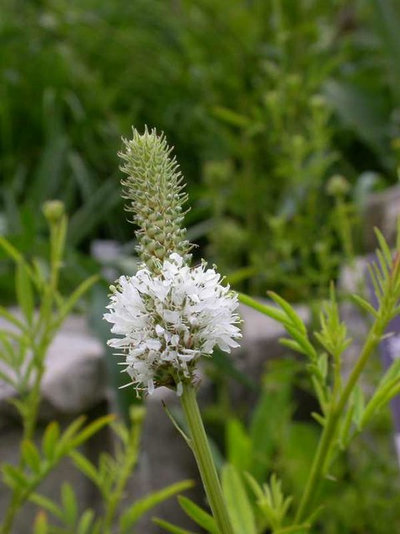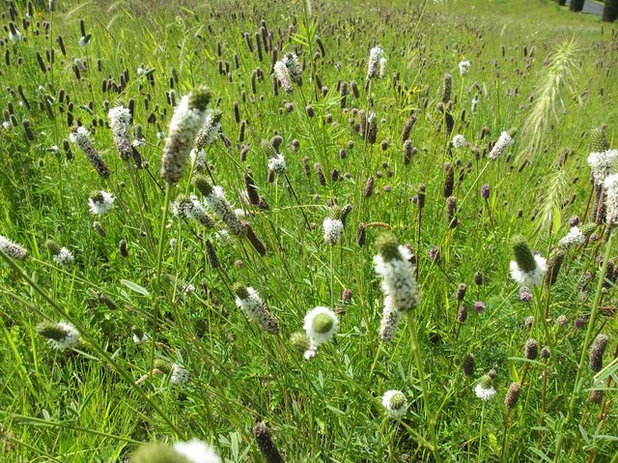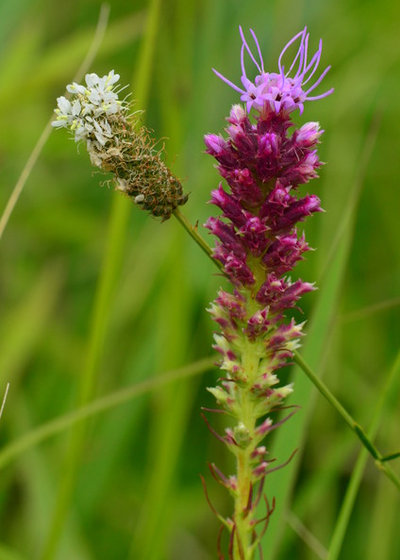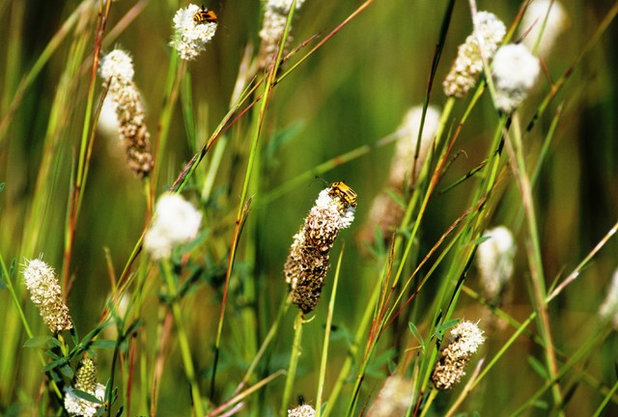For a beautiful, beneficial species from the wild that isn’t often used in designs, consider
Dalea candida as you plan next year’s planting. Related to purple prairie clover (
D. purpurea), white prairie clover blooms a week or two earlier, giving the summer landscape a nice one-two punch of blooms for pollinators.
White prairie clover’s leaves are larger and longer than purple prairie clover’s, which helps distinguish it when not in flower. This central U.S. native plant is extremely drought-tolerant in a variety of soil conditions and worth planting where other plants wither away in the heat.

Missouri Botanical Garden
Botanical name: Dalea candidaCommon name: White prairie clover
Origin: Great Plains, prairie and meadow native from Alberta, Canada, south to Arizona, and east to Ontario, Canada, and Alabama
Where it will grow: Hardy to minus 40 degrees Fahrenheit, or minus 40 degrees Celsius (USDA zones 3 to 8; find your zone); part of the tall-grass, mixed-grass and short-grass prairie eco-regions
Water requirement: No supplemental water needed once established, which happens fairly quickly; prefers dry to medium soil
Light requirement: Full sun
Mature size: 1 foot to 2 feet tall and wide
Benefits and tolerances: Adaptable and resilient prairie native; can grow in a variety of soil conditions; pollinator plant; adds nitrogen to soil
Seasonal interest: Several weeks of bloom anywhere from early to late summer, depending on region, followed by ornamental seed heads in autumn that attract wildlife
When to plant: Plant potted or bare-root plants in spring to midfall; sow seeds in late fall through late spring

Benjamin Vogt / Monarch Gardens
Distinguishing traits. White prairie clover has an airy, open form, with stems angling out from a central point. The leaves are somewhat lacy and deeply lobed. Blooms begin from the base of the flower head and proceed upward over one to two weeks in early to late summer, depending on where you live. Ornamental seed heads follow.
While in bloom, the flowers are covered in a diversity of pollinating insects, such as native bees, flies and moths. Reakirt’s blue (
Hemiargus isola) and southern dogface (
Zerene cesonia) butterflies use white prairie clover as a host plant for their young.
White prairie clover’s autumn seeds benefit a variety of wildlife, from birds to small mammals, and look great against a blue sky.
 How to use it.
How to use it. White prairie clover makes a good addition to a drought-tolerant, native moon garden of white and silvery blooms. It also displays well massed with native short grasses like little bluestem (
Schizachyrium scoparium), sideoats grama (
Bouteloua curtipendula) and prairie dropseed (
Sporobolus heterolepis). Pair with its sibling purple prairie clover (
Dalea purpurea), which blooms at the tail end of
D. candida’s cycle. In the wild, white prairie clover is an indicator of an older, more established and healthy prairie — you won’t find it in disturbed sites.
Additionally, several Native American tribes brewed white prairie clover’s leaves in a tea, chewed its roots and used its dried stems as a broom.
Shown: White prairie clover planted with prairie blazing star (
Liatris pycnostachya)
Photo by Joshua Mayer
 Planting notes.
Planting notes. This very drought-tolerant plant thrives in clay, loam, sand and rocky soils. As a legume, it creates nitrogen in the soil — a free fertilizer — so planting it in groups or clumps among other perennials will benefit the overall health of your garden. Be careful not to place prairie clover among taller plants that might overtake or shade it, as it really does need blazing, hot sun.
Photo by Wisconsin Department of Natural Resources





